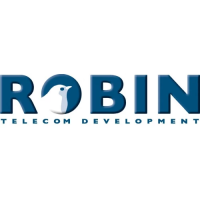
Do you have a question about the Robin DY27-2D and is the answer not in the manual?
Never inhale exhaust gases; they are poisonous and dangerous.
Be sure to stop the engine prior to refueling and avoid overfilling.
Do not operate near open flame or flammable materials.
Place protective covers over rotating parts and be careful of hot parts.
Operate the engine on a stable, level surface, away from small rocks and loose gravel.
Check fuel pipes, bolts, nuts, oil, and fuel levels before operation.
Pour diesel engine oil up to the upper level of the oil gauge.
Use clean, fresh automobile diesel fuel and do not overfill.
Procedure for bleeding air from the fuel system for engines with or without automatic air bleeding.
Use a 12V-24AH battery and proper gauge wires for connection.
Table of recommended cable lengths, diameters, and wire gauges for battery cables.
Table of recommended wire gauges for switch cables based on length and diameter.
Use a flat braided wire of 0.03 sq. in. sectional area for ground wire.
Connect battery terminals to magnetic switch and ground the engine.
Diagram showing the electrical connections for the electric starter system.
Procedure for starting the engine.
Set the speed control lever to the START position (HIGH SPEED).
Pull the recoil starter knob slowly, then swiftly with both hands.
Insert key, turn to RUN, then START to engage the starter motor.
Inject fuel, pull starter knob, and use auxiliary fuel inlet if needed.
Procedure for running the engine after starting.
Set speed control to low speed for warm-up, then adjust to required engine speed.
Procedure for stopping the engine.
Set speed control to low, run for minutes, then push stop lever down.
After stopping, set key switch to STOP and remove the key.
Check fuel level, speed control, and high pressure pipe for starting issues.
Check fuel gauge, speed control position, and disconnect high pressure pipe.
Check battery charge and wiring tightness if the electric starter fails.
Drain fuel and check for foreign objects or water in the fuel tank.
Check air cleaner, vibration, exhaust color, fuel level, surroundings, leaks, and oil.
Table detailing maintenance intervals for checking oil, bolts, air cleaner, and filters.
Change engine oil after 25 hours initially, then every 100 hours. Clean oil filter.
Clean air cleaner elements every 100 hours or more frequently in dusty conditions.
Discharge water from fuel filter every 300 hours; replace filter assy. every 1000 hours.
Retighten loose bolts, check for leaks, and replace damaged parts.
Replace the fuel pipe every 2 years or immediately if leaking is found.
Refill battery with distilled water if electrolyte is low, noting seasonal consumption differences.
Remove the drain screw of the fuel filter to discharge fuel.
Change engine oil, pour oil into auxiliary fuel inlet, and pull starter knob.
Pull starter knob, disconnect battery, wipe engine, and store in a well-ventilated area.
Recharge the battery once a month as it discharges itself even when not connected.